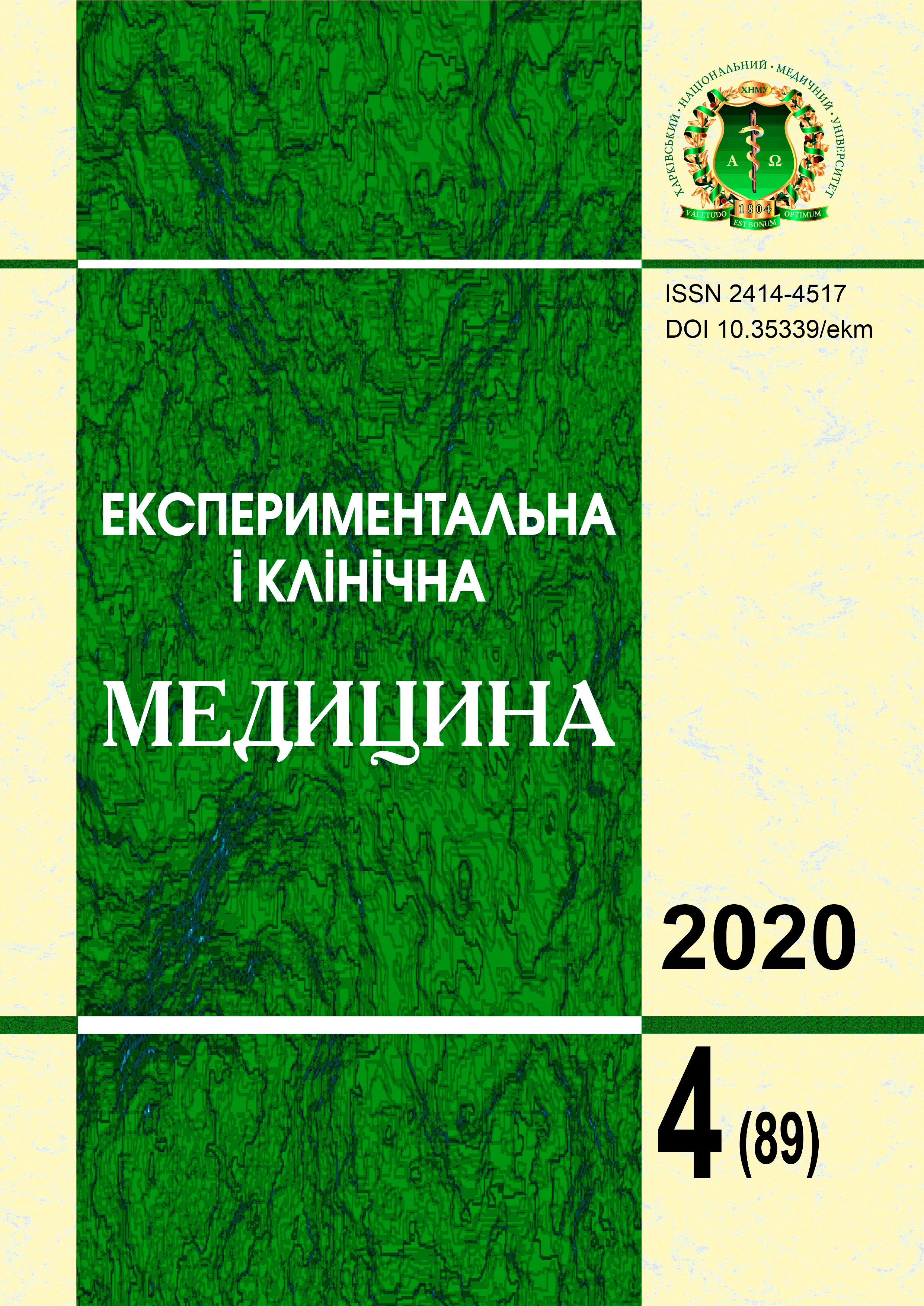Abstract
The peculiarities of the structure of the cells of the lattice labyrinth and the sphenoid sinus were determined. On the basis of the Merefa CRH of the Kharkiv region 400 male and female patients aged 20 to 60 years were examined, which were divided into three age groups. Patients in all groups underwent CT scans for reasons unrelated to upper respiratory tract disease (suspected stroke, which was not confirmed, etc.). On the basis of CT studies, the structure parameters of the lattice and sphenoid sinuses were calculated and it was established that they largely depend on sex. One of the calculated parameters was the minimum wall density of the lattice and sphenoid sinuses. In both cases, it was found that in women this parameter was lower than in men. It was also found that some variants of the structure can serve as a substrate for the narrowing of the natural anastomosis, the deterioration of sinus ventilation and the emergence of inflammatory processes in them. Thus, the presence of a Galer cell significantly reduces the size of the message between the nasal cavity and paranasal sinuses. Most often among all variants of pneumatization of cells of a lattice labyrinth the frontal cell was defined, the Onodi's cell was the rarest. The volume of the cells of the lattice sinus was smaller in women than in men.
Keywords: CT, рaranasal sinuses, ethmoid sinus, sphenoid sinus.
References
Vaid S., Vaid N. (2015). Normal Anatomy and Anatomic Variants of the Paranasal Sinuses on Computed Tomography. Neuroimaging Clin N Am., vol. 25, issue 4, pp. 527–548, DOI:10.1016/j.nic.2015.07.002.
Jankowski R., Nguyen D.T., Poussel M., Chenuel B., Gallet P., Rumeau C. (2016). Sinusology. Eur Ann Otorhinolaryngol Head Neck Dis., vol. 133, issue 4, pp. 263–268, DOI:10.1016/j.anorl.2016.05.011.
Yazici D. (2019). The Analysis of Computed Tomography of Paranasal Sinuses in Nasal Septal Deviation. J Craniofac Surg., vol. 30, issue 2, pp. e143–e147, DOI:10.1097/SCS.0000000000005077.
Abuzeid W.M., Peterson A.Z., Rathor A., Xu J.C., Velasquez N., Rashan A.R et al. (2017). Enhanced Irrigant Delivery to the Ethmoid Sinuses Directly Following Ethmoid Punch Sinusotomy. Ann Otol Rhinol Laryngol., vol. 126, issue 12, pp. 804–812, DOI:10.1177/0003489417737323, PMID: 29047295.
Gibelli D., Cellina M., Gibelli S., Oliva A.G., Codari M., Termine G., Sforza C. (2018). Volumetric assessment of sphenoid sinuses through segmentation on CT scan. Surg Radiol Anat., vol. 40, issue 2, pp. 193–198, DOI:10.1007/s00276-017-1949-1, PMID: 29270712.
Özdemir A., Bayar Muluk N., Asal N., Şahan M.H., Inal M. (2019). Is there a relationship between Onodi cell and optic canal? Eur Arch Otorhinolaryngol., vol. 276, issue 4, pp. 1057–1064, DOI:10.1007/s00405-019-05284-0.
Chmielik L.P., Chmielik A. (2017). The prevalence of the Onodi cell – Most suitable method of CT evaluation in its detection. Int J Pediatr Otorhinolaryngol., vol. 97, pp. 202–205, DOI:10.1016/j.ijporl.2017.04.001.
Chaudhari R.S., Sagar K., Sagar N., Sanjeev O., Abhay K., Pratik P. (2019). Prevalence of Haller's Cells: A Panoramic Study. Ann Maxillofac Surg., vol. 9, issue 1, pp. 72–77, DOI: 10.4103/ams.ams_10_19, PMID: 31293932, PMCID: PMC6585201.
Nedunchezhian K., Aswath N., Amudhan A. (2018). Quest for haller cells: A digital orthopantomography study. Indian J Dent Res., vol. 29, issue 2, pp. 181–185, DOI: 10.4103/ijdr.IJDR_65_17, PMID: 29652011.
Dong Y., Zhou B., Niu Y.T., Wang Z.C. (2011). CT evaluation of bone remodeling in rabbit models with rhinosinusitis. Chinese J. of Otorhinolaryngology Head and Neck Surgery, vol. 46, issue 10, pp. 848–853.
Gibelli D.M., Cellina M., Gibelli S., Schiavo P., Oliva A.G., Termine G. et al. (2018). Can Volumetric and Morphological Variants of Sphenoid Sinuses Influence Sinuses Opacification? J Craniofac Surg., vol. 29, issue 8, pp. 2344–2347, DOI: 10.1097/SCS.0000000000004797, PMID: 30277947.
Liu J., Liu Q., Wang N. (2019). Posterior ethmoid cell expansion towards the inferolateral region of the sphenoid sinus: a computed tomography study. Surg Radiol Anat., vol. 41, issue 9, pp. 1011–1018, DOI:10.1007/s00276-019-02277-w.

